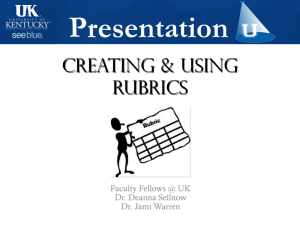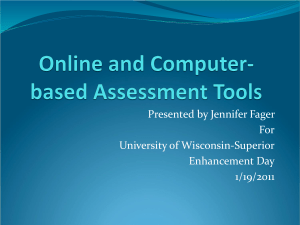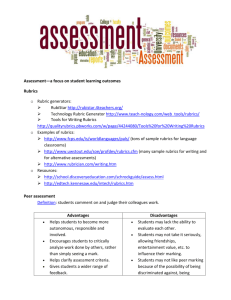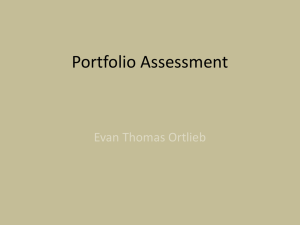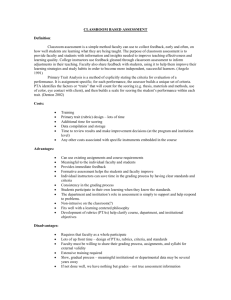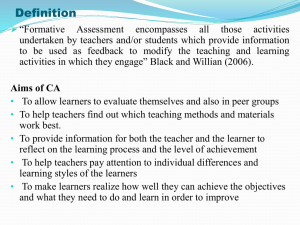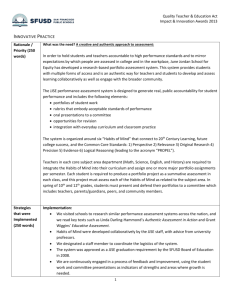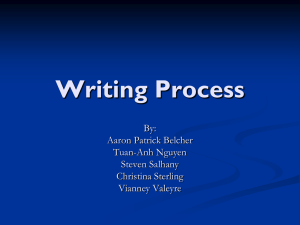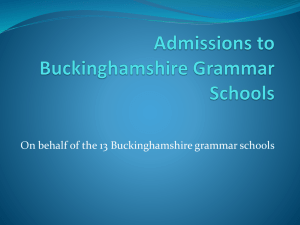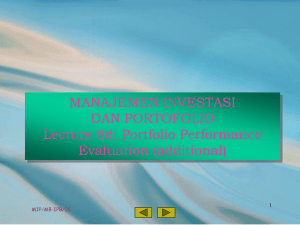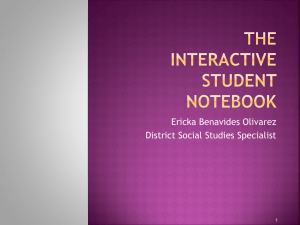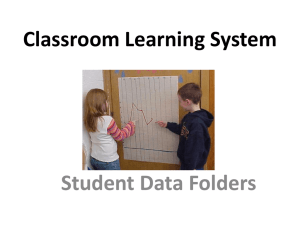BCPS DISTRICT Writing program - Bullitt County Public Schools
advertisement
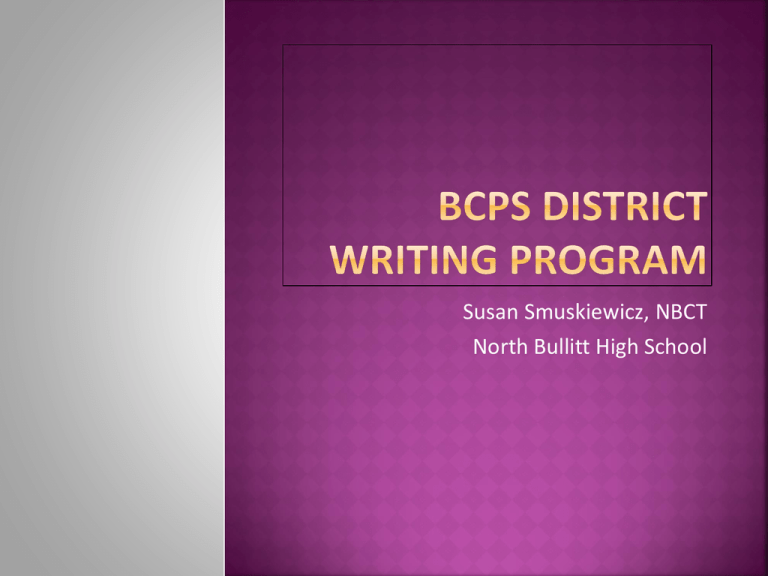
Susan Smuskiewicz, NBCT North Bullitt High School SB 1 defines writing as “a purposeful act of thinking and expression that uses language to explore the ideas and communicate meaning to others. Writing is a complex, multi-facited act of communication.” The goal is to improve literacy instruction in our schools. Schools should focus on the overall writing program, not on assigning specific writing pieces for students to produce. Writing Across the Curriculum: incorporating writing tasks such as writing to learn, writing to demonstrate learning and writing for publication. Best practices in writing and developing policies that support the program outlining what writing instruction should look like. Writing Reading Listening Speaking Observing Use of Technology Portfolio THEN. . . Focus WAS on product. Specific genres of writing as determined by the KDE writing program Final “finished” pieces that go into a School Writring Portfolio Scored Portfolios Portfolio NOW . . . Focus IS on process Growth in literacy-not just writing. The playing field is wide open in terms of which types of writing can be included in the working folder. Student working folders will be reviewed through a district/state audit. Texting Admit slips Exits slips Multiple Choice Questions The writing plan widens the scope to include all forms of communication. Attention should be given to the writing process. The emphasis should be proccess: pre-writing, revision, editing, and grading procedures for each assignment. On Demand is non-negotiable. Technology should be viewed as vehicle to incorporate as part of the writing plan (i.e. 21st Century Literacies). Writing methods and the products should be produced across the curriculum. Pre-Writing/Planning Feedback-teacher, peer, parent, other interested adults. (written feedback or with appropriate rubrics) Feedback regarding areas where students need to improve his/her writing and communication skills which is demonstrated in their “working folders” to help students improve their work over time. Developing effective assessment methods/tools/rubrics to measure student growth over time as it pertains to the process of their learning. Writing Focus . . . Creating a thesis statement The Five Paragraph Essay On Demand Forms Prewriting forms and development Introduction to Research Verbal Focus: Interviewing skills, Questioning, The Art of Persuasion. Technology Focus: Microsoft Word, Power Point, and Excel; E-mail Writing Focus . . . Citations Transitions Verbal Focus: Tone Technology Focus: Photo Editing Software, Microsoft Movie Maker, Photo Story. Written Focus: College and Career Writing Verbal Focus: Technology: Professional Presentations Effective incorporation of technology. Provide feedback to students on strengths and weaknesses. Analyze and compare student growth over the years. Consider methods by which teachers are trained to analyze student work AND the criteria and standards by which work will be measured. Professional Development for understanding the writing process and technology support for teachers to help improve student writing. Adopting the District Writing Plan to fit the needs of our students/school. Developing a framework for Writing Program Review. Create quality standards to evaluate the school writing plan. Grading procedures and responsibility for review of the “working folder.”
